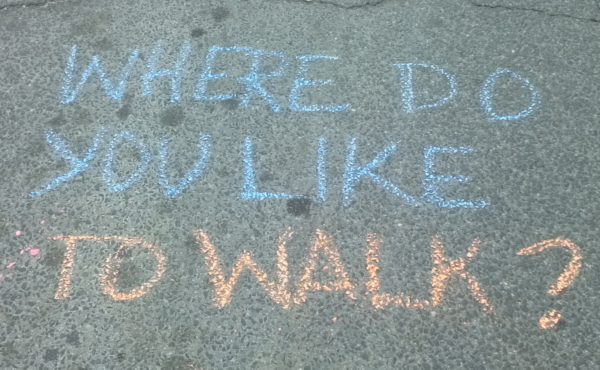
Madison, Wisconsin was named the most walkable city in the US in a recent ranking of the walkability of the largest 100 US cities, with Austin, Texas and San Francisco close behind. Bringing up the rear of least walkable cities were places such as Miami and Newark.
The ranking was established by the American Podiatric Medical Association and healthy-lifestyle magazine Prevention, in consultation with walkability guru Dan Burden. The magazine describes some of the criteria used:
Tops on the list of what makes a place fitness walker friendly are safe streets, beautiful places to walk, mild weather, and good air quality. Specific criteria included:
• % of population that walks for exercise
• Use of mass transit
• Parks per square mile
• Points of interest per square mile
• Average winter/summer temperatures
• % of athletic shoe buyers
The athletic shoe buyers one is ingenious, although it does show the survey’s bias towards fitness walking rather than, say, commuting. Still, these kinds of studies are really useful for getting people to think about what makes a good city to walk in.
The CNN story about this survey describes some of the measures taken by Madison to improve its walkability:
Adopting a walker-friendly plan 10 years ago was a major plus for Madison, said Prevention magazine’s deputy editor Karyn Repinski. That plan focused on maintaining and improving the city’s walkability and requires that when roads are redeveloped, they should accommodate not just cars, but bikes and pedestrians, too.
This road redevelopment policy is something that pedestrian and cycling activists are trying to establish in Toronto — it’s good to be able to point to a city where this policy has been successfully implemented.
(Check out this Spacing Wire photo-tour of Madison from last July)
photo by mazda6 on Flickr


5 comments
Although this is an interesting article, I think we need to be careful to recognize its focus on walking for fitness (as you note). There are other factors that are more applicable in assessing whether a city is walkable for everyday activities, notably density and presence of mixed uses. It’s all well and good to have plenty of parks, but to foster a culture of walking the first item on a checklist should be whether there are regular destinations within a reasonable walking distance (IMO, a grocery store). In essence, could you live in that city without a car. (I would argue that to be more important to overall fitness than walking for its own sake… but that type of culture probably doesn’t sell magazines as well! Well, maybe urban design magazines…)
Skewing the criteria toward dedicated fitness walking, rather than everyday walkability, results in at least a couple of surprises, such as Las Vegas (15) and Arlington, TX (21) coming ahead of Boston (31) and New York (39).
I’d agree with Brent. Madison has many wonderful things going on (as shown in that earlier Spacing post) but it’s still a car-oriented place, like all of the midwest. You need to drive to get to the grocery stores, etc. The neighbourhoods are too spreadout to be truly walkable.
Fitness freak population though, indeed. An oasis of Blue politics too.
I’d have to say that the criteria in this study were just all off – very little to recommend them, in fact. Los Angeles ranks above Chicago. A survey that would rank Los Angeles above any other city is obviously not only flawed, but egregiously so. Very basic benchmarks, like distance between addresses (in LA, you can walk five minutes to get from 124359 Sunset to 124361 Sunset – walking a couple of blocks to the corner store can take an afternoon) and the existence of sidewalks (many even residential streets in LA don’t have them) have more weight than money spent on shoes that could theoretically, be used for walking.
Distance between addresses doesn’t always work. To walk from 1 to 101 Yonge Street takes about 900 metres; in car-oriented suburban Seattle, 100 address numbers go by in about 100 metres. (The reason is a system where streets are numbered based on a 100 yard grid, even though actual blocks are much farther apart.)
I think they’re going about the whole thing backwards: they’re assuming certain things (weather, transit use, parks) establish a walkable city and measuring those causes. Instead, they should measure the result — survey how often and how far people walk — and then try to determine how the highly-walked cities got that way.
Having walked in San Francisco, I am going to have to strongly disagree.
Despite their best efforts, you can’t change topography!
Also, that Oakland, with its freeways and International Blvd. ranks anywhere NEAR New York is offensive at best.
I agree with the LA comment; in fact, large Californian cities just aren’t walkable! Simply, if they were, people would do it.
Oh well. Maybe we ought to make our own.